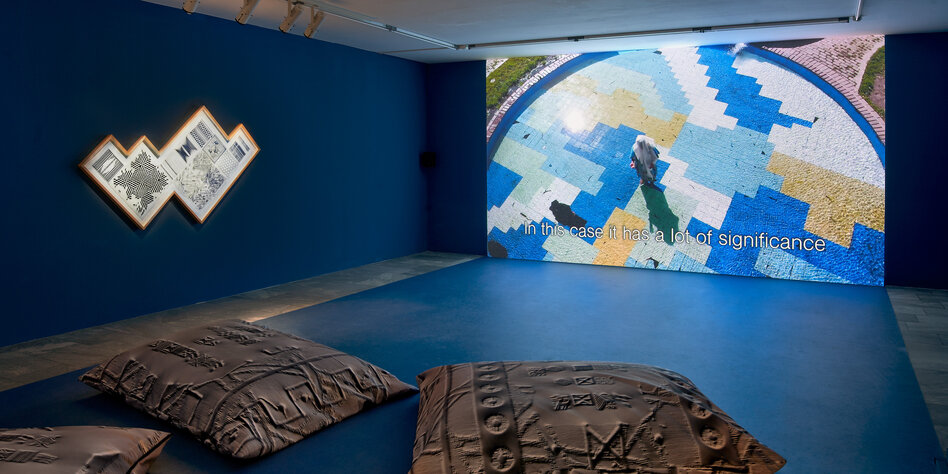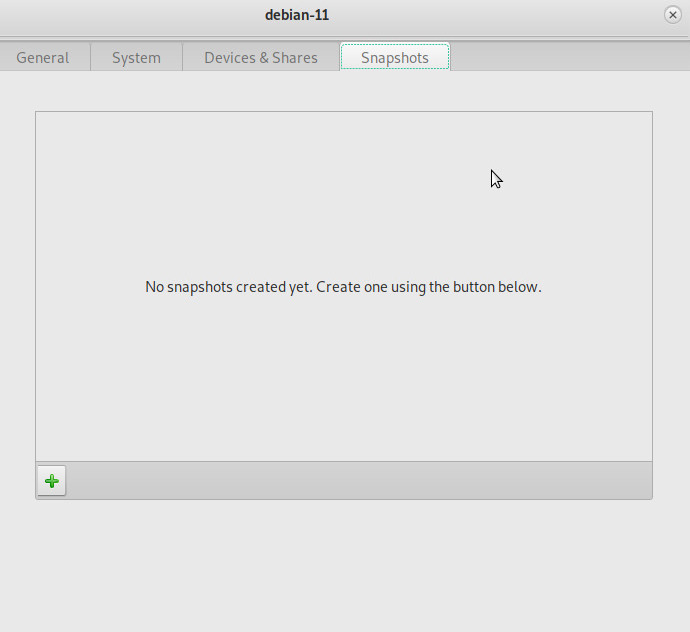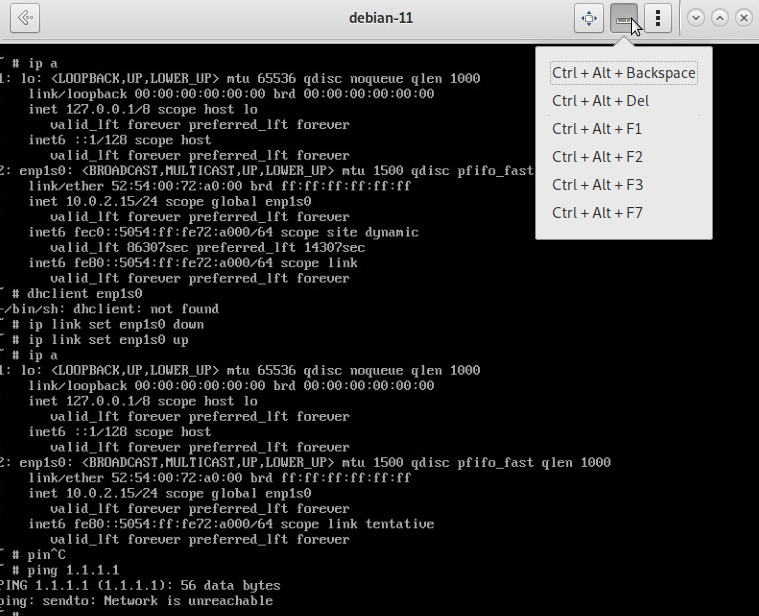One person like that
#virtual


Noam Chomsky ~ Media and Mass Manipulation
A virtual lecture on Noam Chomsky
https://yewtu.be/watch?v=0kCyL_6WnVI
#virtual #lecture #noamchomsky #hans-georg-moeller #philosophy #media #massmedia #elitemedia #manipulation #capitalism #propaganda
10 Likes
2 Shares
https://www.visionaryartcollective.com/exhibitions/what-remains
..."What Remains is a #virtual group #exhibition providing an in-depth look at our personal and creative growth since the onset of the pandemic.
In the face of unprecedented challenges brought by the global pandemic, #artists have emerged as resilient and resourceful champions of creativity. Confronted with isolation and uncertainty, they turned their homes into studios, their struggles into inspiration, and their solitude into powerful narratives, creating pieces that resonated deeply with global audiences.
This period tested artists’ adaptability, sparking a wave of innovative techniques and forms of expression. With the help of technology, art has become more accessible than ever before and artists have become beacons of hope, using their craft to shed light on social issues, amplify underrepresented voices, and offer solace to those grappling with the emotional toll of the pandemic.
Artists’ unwavering dedication to their practice demonstrated that even in the darkest of times, art remains an essential source of healing, inspiration, and connection for all. In the "What Remains" group exhibition, artists showcase their adaptability, and a continued commitment to using their creativity as a means of expression, connection, and positive change in the world.
—Elizaveta Zhurkovskaya AKA Curator on the Go"
3 Likes
5 Likes
2 Comments
1 Shares
4 Likes
1 Comments
#BadGear - #Roland #System-8 - #AudioPilz

Welcome to #Bad #Gear, the show about the world's most hated #audio #tools. Today we are going to talk about Roland System-8. Is this soon abandoned flagship #synthesizer, little sibling of #System-1, part of the Roland #Aira range, #virtual #analog #synth, Roland #Cloud plugout host and overall eye-sore a #future #classic or just another #expensive #plastic #toy? Is it worthy of the rich Roland #Jupiter-8 and Roland #Juno-106 #legacy?
https://www.youtube.com/watch?v=hc-ynHwtfEg
One person like that
#BadGear - #Korg #MS2000 - #AudioPilz
Welcome to Bad Gear, the #show about the world's most hated #audio #tools. Today we are going to talk about the Korg MS2000. Is this #virtual #analog #synth and older sibling of the #Microkorg still worth getting or is its compact successor the more convenient option? Is it the Macrokorg?
https://www.youtube.com/watch?v=au3adHDxgKE
#synthesizer #synthétiseur
SOS Wes Allen: “Before I took office, #Alabama transmitted the personal information of millions of our citizens to this private organization for the past several years. That information is stored on a server somewhere but we do not know where. There is no ERIC operation at the location they claim is their office. A lot of #personaldata and #taxpayer money has been transferred to ERIC. Where is that data? Where are the employees? Where are the offices? Where are the computers?”
However, Mr. #Allen was not done with #ERIC. He was in the Washington D.C. area last week for the 2023 NASS Winter Conference. It’s the annual meeting for all Secretary of States. In a brilliant move, he decided to visit the published address for ERIC’s headquarters. That address is 1201 Connecticut Ave. NW, Ste 600, Washington, DC 20036.
.
Allen said, “Since I was in town, I went to see the ERIC Headquarters. What I found was that there was no ERIC headquarters at that address. There were no employees. There were no servers. There was no ERIC presence of any kind. Instead. I found a #virtual office that is rentable by the day. What it was missing was people, servers and any sign of the ERIC team.”
.
This 12 story location, known as the Longfellow Building, is partly operated by a company called Expansive. They offer virtual workspaces across the country and rent space by the day. Other companies offer this same exact 6th floor Suite 600 address for rent too. In fact, the Global Innovation Fund, Dezenhall Resources, Grassroots Plus, and other businesses have the exact same address, including the same suite number, as ERIC’s headquarters.
2 Likes
1 Shares
6 Likes
1 Comments
3 Shares
A Day in a Life as a Business Intelligence Developer
with Gerhard Höll
Many paths lead to the goal if you want to become a Business
Intelligence Developer. There is no defined route, much more important
is the fun and enthusiasm for this job. Gerhard has always been
interested in the BI environment and enjoyed working in it the most. In
his studies in Business Informatics, he got to know the whole range of
BI, from Business Intelligence to Data Warehousing and Data Analytics.
In his role as Recruiting Support, he can give you important tips about
his job that can increase your chances of landing your dream job.
::: {.wp-block-spacer style="height: 15px;"}
:::
Are there any main tasks that arise on a daily basis?
That depends on the project. As a developer, not really, apart from the
coordination rounds within the development team. I am currently
involved in a project in which I have contact with the business side,
DWH operations and the developers of the source system. In this project,
the entire spectrum of data warehouse development is covered -- from
requirements gathering to development and operation. We look at making
sure the data warehouse is running smoothly and that up-to-date data is
being delivered daily for users to work with. When you come in after
your morning coffee, the first task that comes up is to see if the load
runs have gone correctly. It is important that the business users can
work with the BI and DWH system.
::: {.wp-block-spacer style="height: 15px;"}
:::
 {.wp-image-58454
{.wp-image-58454
width="1024" height="683"}
::: {.wp-block-spacer style="height: 0px;"}
:::
What influence do you have on the customer's work?
Efficiency and benefit should always be at the priority to make sure
that the customer gets the most value from what we do. You can avert or
recommend various things that can harm or benefit the system. In this
way you can influence customers in their decisions. In the area of
evaluations and graphical presentations, you also have influence on the
use of the various presentation options. The goal is always to recognize
facts and contexts more quickly through the evaluations in order to gain
new insights.
::: {.wp-block-spacer style="height: 0px;"}
:::
What do you enjoy the most?
The best part of my job is dealing with issues together with my
colleagues and finding solutions together. You are involved in exchanges
and coordination on a wide variety of topics. Both at the customer's
site and with colleagues at virtual7. It is always a welcome change to
work together with other people and not just to develop in a quiet room.
Of course, that also has to be done, but the variety and interaction is
crucial for me here.
::: {.wp-block-spacer style="height: 0px;"}
:::
Which skills are essential for a job at virtual7?
The requirements are first of all of a technological nature, of course.
Since we work with Oracle products, you should be familiar with Oracle
technologies. These include: The Oracle Database, SQL and PL/SQL, Oracle
Data Integrator and Oracle Analytics Server. You will also need to be
familiar with the methods to create data warehouse architectures and
models, dashboards and analytics. Since we are always working with
different people and teams, soft skills are just as important, if not a
bit more important. Communication is especially important here. You have
to be able to ask the right questions. Likewise, being able to present
and explain complicated issues in a simple way. The knowledge level and
perspectives of individuals on different aspects can vary greatly, so
you need to have an understanding and background knowledge of the
project and the subject area. It is not always easy to get everyone
involved on the same page. Apart from that, you need to be a team player
and be able to organize yourself in your team. As a developer you always
need a good grasp and analytical thinking, as well as convincing
presentation skills.
::: {.wp-block-spacer style="height: 0px;"}
:::
 {.wp-image-58453
{.wp-image-58453
width="1024" height="683"}
::: {.wp-block-spacer style="height: 0px;"}
:::
Is Oracle a must have to work for us?
Our clients make it a point to see in resumes that you have experience
with Oracle. So hard facts: X/Y years of Oracle experience. Everything
that is Oracle-specific about the tools can be learned quickly.
Methodological knowledge in the data warehouse and BI environment are
much more important in our projects. You should know modeling approaches
and how to represent certain facts and justify them. It is important to
be honest about your experience, this will bring you and us much further
than a pimped CV.
::: {.wp-block-spacer style="height: 0px;"}
:::
Good to know that...
- virtual7 likes to celebrate successes together.
- the job is not just a consulting assignment, but a safe place to work for several years.
- you mainly work at the customer's and can also do a lot at virtual7.
- team building is huge internally, be it at the conference, chat 'n' chills or meet-ups.
- you can be yourself and (almost) everything is informal.
Der Beitrag <strong>A Day in a Life as a Business Intelligence
Developer</strong>
erschien zuerst auf virtual7 GmbH - Blog.
https://blog.virtual7.de/a-day-in-a-life-as-a-business-intelligence-developer/
#virtual7 #digitalisierung #deutschland #virtual #digitalezukunft #digital #zukunft #agile #virtual7gmbh #BI #job #Oracle #Recruiting #SQL
1 Shares
virtual7 at the Pitch Club Developer Edition
*To give everyone a chance to understand Felix's interview, we have
translated the original
interview.
Felix is a Technical Consultant at virtual7 in Karlsruhe. Members of the PCDE talked to him about his tasks in the company and learned why his title only partially reflects his day-to-day work. He also talks about his experiences at virtual7, future challenges, and his participation at the P*CDE.*
::: {.wp-block-spacer style="height: 25px;"}
:::
Who are you and what are your tasks at virtual7?
Hey, I'm Felix and my official job title is Technical Consultant.
However, my tasks are much better described by my Roles in the company.
For example, I have the Role of „DevOps Engineer", in which I support
DevOps applications at one of our customers. In addition to my work with
customers, I also have the Role of „Content Creator", in which I help
produce our podcasts, write articles for the virtual7 magazine, or
report on why it's worth applying for a job at virtual7. I also really
enjoy the Role of „Technical Presales". Here I support our Core Cluster
Sales in winning new customers by contributing my technical knowledge to
the applications.
::: {.wp-block-spacer style="height: 25px;"}
:::
What do you appreciate most about virtual7 as an employer?
There are a few aspects I would like to mention in this context. I think
you can recognize the most important one from the answer to the previous
question: The versatility of the tasks. Instead of just working quietly
on your project, you can take on responsibility and contribute in a wide
range of areas. The fact that something like this is possible is due to
our responsive corporate organization. In addition to the varied tasks,
I appreciate the fact that we communicate very transparently about both
successes and difficulties.
What kind of company culture can new colleagues expect at your company?
Responsiveness is a key factor here. This means that each Cluster
(something like a department) is self-organized and does not have a
classic head or a typical hierarchy. Instead, tasks are divided among
different Roles and employees. If you want to know more about this, you
can listen to episode 16 of our german
podcast. This allows us to work in a
very agile way and, above all, to involve each individual with his or
her ideas right from the start.
::: {.wp-block-spacer style="height: 25px;"}
:::
Where do you see the biggest challenges for your Cluster in the future?
I would say that at this point you have to mention employee recruitment.
It's an open secret at the moment that talented applicants can more or
less choose their employer. Of course, as an IT service provider, we are
also affected by this development. However, I think that we as a team,
as a company, and the way we are organized have enough arguments to
convince enough future colleagues in the coming years.
::: {.wp-block-spacer style="height: 25px;"}
:::
In which role did you have experience with the PCDE?
I only know the PCDE from the applicant's side. So I didn't have to
sweat too much! Nevertheless, I can imagine switching sides next time
and convincing others to work for us. So with a bit of luck, you'll soon
get to meet me in person.
::: {.wp-block-spacer style="height: 25px;"}
:::
What did you like most about the PCDE?
Breaking through the black box that opens up when you send your
application to hr\@firma-x.de appealed to me the most. Instead of
sending your resume through departments, your future „Team Development"
is sitting right in front of you. „Team Development" is a Role at our
company that takes care of the personal development of our employees.
This gives you the chance to see right away whether you fit into the
company in terms of structure, content, and, above all, personality.
::: {.wp-block-spacer style="height: 25px;"}
:::
Would you recommend your best friend to attend PCDE?
Now, this sounds a lot like one of those „we want your feedback" emails
you get every day. But yes, I would recommend everyone, including my
best friend, to participate in the PCDE. In the best case, you'll find
the right employer for you, in the worst case, you'll get free pizza.
Der Beitrag virtual7 at the Pitch Club Developer
Edition
erschien zuerst auf virtual7 GmbH - Blog.
https://blog.virtual7.de/virtual7-at-the-pitch-club-developer-edition/
#virtual7 #digitalisierung #deutschland #virtual #digitalezukunft #digital #zukunft #agile #virtual7gmbh #Allgemein #Events #event #PCDE #Podcast #Recruiting
1 Shares
Gedanken zum Datenbanktuning
Es kommt immer wieder es vor, dass (Oracle-) Datenbankanwendungen „zu
langsam" sind. Dann wird versucht herauszufinden woran es liegt und wenn
man Glück hat findet sich eine Idee das verursachende SQL-Statement so
zu ändern, dass die Anwendung „schnell genug" wird. Es wird bei diesem
ganzen Vorgang oft übersehen, dass die Ursachen(n) für die schlechte
Performance nicht erst im SQL-Statement begründet ist, sondern viel
früher ihren Ursprung hat.
Die Planung einer performanten Datenbankanwendung beginnt mit der
Planung der Datenbank. Um eine Datenbank planen zu können sollten die
Anforderungen an die mit ihr zu realisierenden Anwendungen bekannt sein.
Einige der Fragen, die für die Planung relevant sind:
\
Ist es eine ERP-Anwendung oder ein Datawarehouse?\
Gibt es Tabellen mit sehr unterschiedlichen Satzlängen?\
Wird mit der Anwendung hauptsächlich abgefragt oder Daten bearbeitet?\
Gibt es mehrere Anwendungen, die mit den Daten arbeiten sollen und haben
diese Anwendungen unterschiedliche Anwendungsmuster?
Mit den gesammelten Anforderungen kann die Physik der Datenbank geplant
werden.
::: {.wp-block-spacer style="height: 36px;"}
:::
Tablespaces und Blockgrößen {#h-tablespaces-und-blockgr-en}
Die Blockgröße(n) der Tablespaces sollten an die Anforderungen der
Anwendung angepasst werden. Zur Erinnerung: Oracle liest immer nur ganze
Blöcke und nicht einzelne Datensätze. Falls es in den Anforderungen an
die einzelnen Tabellen große Unterschiede gibt sollten die Tabellen auf
Tablespaces mit geeigneten unterschiedlichen Blockgrößen verteilt
werden.
Kleine Blockgrößen (2KB/4KB) eignen sich für kurze Satzlängen auf die
oft einzeln zugegriffen wird. Sie eignen sich nicht für lange Satzlängen
und wenn oft auf große Mengen an Datensätzen zugegriffen wird.
Große Blockgrößen (8KB -- 32KB) eignen sich für lange Satzlängen und
wenn große Datenmengen sequenziell abgefragt werden.
Falls wegen eines kleinen Datensatzes ein großer Block gelesen werden
muss oder falls wegen eines langen Datensätzes dieser auf mehrere Blöcke
verteilt werden muss (chaining), so mindert dies die Performance der
späteren Anwendung.
Gegebenenfalls lohnt es sich Tablespaces mit unterschiedlichen
Blockgrößen anzulegen.
::: {.wp-block-spacer style="height: 36px;"}
:::
Tabellen {#h-tabellen}
Die Datensätze einer Tabelle werden in den Blöcken des zu verwendenden
Tablespaces gespeichert. Sobald ein Block eines Tablespace einer Tabelle
zugewiesen ist gehört er zu dieser Tabelle, auch dann, wenn alle
Datensätze in diesem Block gelöscht wurden (high water mark). Bei einem
Full Table Scan werden auch diese inzwischen leeren Blöcke gelesen und
kosten Zeit. Oracle bietet mehrere Möglichkeiten diese Blöcke
freizugeben ( export/import, alter table .. shrink space, usw...)
Oracle vermerkt alle leeren oder teilweise leeren Blöcke einer Tabelle
in die noch Datensätze geschrieben werden dürfen in einer Freelist.\
Mit den Speicherparametern pctfree und pctused (Prozentwerte) kann
angegeben werden, unter welchen Bedingungen ein Block auf die Freelist
gesetzt oder von dieser entfernt wird. Ist der Block zu mehr als pctfree
frei, so wird der Block auf die Freelist gesetzt. Ist der Block zu mehr
als pctused belegt, so wird er von der Freelist genommen.
::: {.wp-block-spacer style="height: 36px;"}
:::
Chaining {#h-chaining}
Falls ein Datensatz nicht in einen Block passt, so wird er über mehrere
Blöcke verteilt. Dann müssen um diesen einen Datensatz zu lesen alle
diese Blöcke nacheinander gelesen werden. (Ob in einer Tabelle solche
Datensätze existieren kann z.B. in user_tables in der Spalte chain_cnt
überprüft werden)
Zu Chaining kommt es, wenn große Datensätze in (zu) kleine Blöcke
geschrieben werden, oder wenn bestehende Datensätze beim Aktualisieren
verlängert werden (z.B. wenn ein varchar2-Wert verlängert wird). Falls
der Datensatz länger ist als die Blockgröße, so lässt sich chaining
nicht verhindern. In diesem Fall kann man darüber nachdenken die Tabelle
in einen Tablespace mit größerer Blockgröße zu verschieben.
Falls die Verlängerung eines Datensatzes aufgrund der
Anwendungsanforderungen vorhersehbar ist, so kann durch setzen eines
geeigneten Werts für pctused der Tabelle dafür gesorgt werden, dass in
den Blöcken genügend freier Platz gelassen wird, so dass eine
Verlängerung eines Datensatzes in den bestehenden Block passt. Für
Tabellen mit Datensätzen, die nur einmal geschrieben und dann nicht mehr
verändert werden, kann pctused hoch gewählt werden.
Falls Datensätze regelmäßig gelöscht und neu geschrieben werden, so
sollte pctfree so gewählt werden, dass ein neuer Datensatz in den noch
freien Platz eines bereits teilweise belegten Blocks passt:
::: {.wp-block-spacer style="height: 36px;"}
:::
Beispiel {#h-beispiel}
Blockgröße: 4096 Bytes\
mittlere Satzlänge eines Datensatzes (user_tables.avg_row_len): 400
Bytes
Zwei Bemerkungen:
- Diese mittlere Länge kann sich ändern.
- Viele Datensätze sind sicherlich länger als 400 Bytes.
Mit „select sum(c.DATA_LENGTH) from user_tab_columns c where
c.TABLE_NAME = \$NAME\$\
können wir die maximale Länge eines Datensatzes ermitteln.
\
Beispiel a) die mittlere Datensatzlänge wäre 600 Bytes.\
Mit pctfree = 15 (4096*0,15 = 614) sind wir auf der sicheren Seite.
Beispiel b) die mittlere Datensatzlänge wäre 6000 Bytes.\
Da wir die Verteilung der Datensatzlängen nicht kennen, müssen wir eine
Annahme treffen:\
pctfree = 20 (2096*0,20 = 819) sollte für die meisten Datensätze
ausreichend sein.
Wir tauchen ein bisschen tiefer ein. Falls wir mit verlässlichern Werten
arbeiten wollen, können wir uns mit etwas Aufwand bessere Kennzahlen
ermitteln:
dump() liefert uns einen String, der u.a. die Länge in Bytes des
Ausdrucks zurückgibt:
Z.B: select dump( 'ä' ) from dual;
DUMP('Ä')
Typ=96 Len=2: 195,164
Dies nutzen wir, um die Länge der einzelnen Spalten zu ermitteln und
diese aufzusummieren.
2 Anmerkungen:
- Jede Spalte benötigt ein zusätzliches Byte Speicherplatz. (Dies berücksichtigen wir nachfolgend)
- NULL-Spalten (auch mehrere) am Ende eines Datensatzes benötigen keinen Speicherplatz. (Dies berücksichtigen wir nachfolgend nicht!)
mit
select '+ coalesce( to_number( regexp_substr( dump( ' || rpad( column_name, 32, ' ' ) ||q'{ ), 'Len=(\d*):', 1, 1, 'x', 1 ) ), 0) +1}' as term
from user_tab_columns
where table_name = $tabellenname$
order by column_id;
können wir uns den schreibintensiven Teil des folgenden Statements
erzeugen lassen:
with len_ as
( select coalesce( to_number( regexp_substr( dump( ), 'Len=(\d):', 1, 1, 'x', 1 ) ), 0) +1
+ coalesce( to_number( regexp_substr( dump( ), 'Len=(\d):', 1, 1, 'x', 1 ) ), 0) +1 + …
+ coalesce( to_number( regexp_substr( dump( ), 'Len=(\d*):', 1, 1, 'x', 1 ) ), 0) +1 as bytes from $tabellenname$ )
select min(bytes), avg(bytes), max(bytes), stddev(bytes) from len_;
Hinweis: für sehr große Tabellen kann diese Auswertung lang dauern. In
diesem Fall sollte sie auf eine ausreichend große repräsentative Menge
begrenzt werden ( where rownum < X ).
Die Werte sind wegen Anmerkung 2 nicht 100% zuverlässig. Für eine
Abschätzung der Verteilung der Datensatzlängen sind sie aber
ausreichend. Unter der Annahme, dass die Längen normalverteilt sind,
kann die Mindestgröße für pctfree wie folgt bestimmt werden:
pctfree = 100 * ( avg + stddev ) / Blockgröße (für ~84% aller
Datensätze ausreichend)\
pctfree = oder 100 * ( avg + 2*stddev ) / Blockgröße (für ~98% aller
Datensätze ausreichend)
Siehe auch:
Der Beitrag Gedanken zum
Datenbanktuning
erschien zuerst auf virtual7 GmbH - Blog.
https://blog.virtual7.de/gedanken-zum-datenbanktuning/
#virtual7 #digitalisierung #deutschland #virtual #digitalezukunft #digital #zukunft #agile #Finance #OracleDatabase #Technology #Chaining #database #Datenbank #Oracle #Tuning
One person like that
1 Shares
Bilderritt in den Zwischenzustand
Bei einer VR-Installation in der Julia Stoschek Collection werden Schamanismus und Hochtechnologie zusammengedacht. Geht das gut? http://www.taz.de/Virtual-Reality-in-der-JSC-Berlin/!5854905/ #taz #tazgezwitscher #tageszeitung #Videokunst #Virtual #Reality #Schamanismus #Berlin #Ausstellung
One person like that
GNU Linux Debian 11 - Gnome Boxes - an Open Source VirtualBox replacement?
In search for alternatives, decided to test drive “gnome boxes“, which is said, to be an easy-going gui for the libvirt qemu virtualization system.
<span style="color: #00ffff;">lsb_release -d</span>; # tested on
Description: Debian GNU/Linux 11 (bullseye)
<span style="color: #00ffff;">su - root
apt update
</span># with MATE Desktop (Gnome2) it's actually only 175MBytes that needs to be downloaded<span style="color: #00ffff;">
apt install gnome-boxes
apt show gnome-boxes</span>
Package: gnome-boxes
Version: 3.38.2-1
Priority: optional
Section: gnome
Maintainer: Debian GNOME Maintainers <pkg-gnome-maintainers@lists.alioth.debian.org>
Installed-Size: 7,140 kB
Depends: genisoimage, libosinfo-bin, libvirt-daemon, tracker (>= 2.0), dconf-gsettings-backend | gsettings-backend, libarchive13 (>= 3.1.2), libc6 (>= 2.7), libcairo2 (>= 1.6.0), libfreerdp2-2 (>= 2.0.0~git20160317.1.75ae3f5+dfsg1), libgdk-pixbuf-2.0-0 (>= 2.25.2) | libgdk-pixbuf2.0-0 (>= 2.25.2), libglib2.0-0 (>= 2.52.0), libgtk-3-0 (>= 3.22.20), libgtk-vnc-2.0-0 (>= 0.5.1), libgtksourceview-4-0 (>= 2.91.4), libgudev-1.0-0 (>= 165), libhandy-0.0-0 (>= 0.0.11), libosinfo-1.0-0 (>= 1.4.0~), libpango-1.0-0 (>= 1.14.0), libsecret-1-0 (>= 0.7), libsoup2.4-1 (>= 2.44), libspice-client-glib-2.0-8 (>= 0.35), libspice-client-gtk-3.0-5 (>= 0.32), libtracker-sparql-2.0-0 (>= 0.10.0), libusb-1.0-0 (>= 2:1.0.8), libvirt-glib-1.0-0 (>= 3.0.0), libvte-2.91-0 (>= 0.40.2), libwebkit2gtk-4.0-37 (>= 2.26), libwinpr2-2 (>= 2.0.0~git20160317.1.75ae3f5+dfsg1), libxml2 (>= 2.7.8)
Recommends: qemu-system-x86
Breaks: libspice-server1 (<< 0.12.5-1.1~)
Homepage: <a href="https://wiki.gnome.org/Apps/Boxes">https://wiki.gnome.org/Apps/Boxes</a>
Tag: admin::virtualization, hardware::emulation, implemented-in::python,
implemented-in::vala, interface::graphical, interface::x11,
role::program, scope::application, suite::gnome, suite::openstack,
system::cloud, system::virtual, uitoolkit::gtk, use::simulating,
use::viewing, x11::application
Download-Size: 1,085 kB
APT-Manual-Installed: yes
APT-Sources: <a href="http://ftp.halifax.rwth-aachen.de/debian">http://ftp.halifax.rwth-aachen.de/debian</a> bullseye/main amd64 Packages
Description: Simple GNOME app to access remote or virtual systems
GNOME Boxes is a desktop client to view or use local virtual machines,
remote physical machines, or remote virtual machines.
Boxes is intentionally simple and easy to use.
Hardware virtualization is required to use local virtual machines.
as minimalistic as the description is the gui:
indeed nothing against a bit of gui minimalism…
kvm is developed by Redhat… that’s why it is right there on top… but there is more for “easy” or “instant” install…
would have been nice, if the disk size can be directly entered in numbers as well…
also a checkbox for “thin provisioning” would have been nice
but it definately works
the vm properties tab, might be a bit too minimalistic… when changing vm settings afterwards, the user will have to rely on the user’s xml editing skillz ;-p
this isa nicely done overview screen… showing real time thumbnails of the all vm’s current desktop…
when almost finished installing Debian 11… gnome boxes skips the “where to install grub” screen and reports “debian 11 is ready to use”
but it won’t boot X-D
just in case if the cursor is “stuck” it can be released by hitting Ctrl+Alt
the gui minimalism is a nice try, but gnome-boxes got some quality issues there, not ready for use with Debian, not ready to replace redhat’s kvm’s excellent virtmanager, which works flawless under GNU Linux Debian and has way more settings to modify vms
#linux #gnu #gnulinux #opensource #administration #sysops #gnome #boxes #virtualbox #kvm #virtual #vm #virtualization #qemu
Originally posted at: https://dwaves.de/2022/05/10/gnu-linux-debian-11-gnome-boxes-an-open-source-virtualbox-replacement/
One person like that
1 Comments
7 Likes
A Date in 2025 is a #short #film from #Dust. Interesting that this was made before the pandemic, the themes of #loneliness, not going out and #virtual interactions are so spot on.
2 Likes

Facebook’s “Metaverse” Must Be Stopped
' #Facebook founder #MarkZuckerberg's #metaverse is no #utopian #vision — it's another opportunity for #BigTech to #colonize our #lives in the name of #profit. #SiliconValley tends to feel it can do whatever it wants. Its major companies have ignored #regulations with little consequence and shaped how we #communicate to #increase #profits despite causing #social #harm. We should instead imagine how #tech can be developed for the #public #good.'
#virtual #worlds #environment #surveillance #technology #industry #science #video #games #internet #workers #rights
5 Likes

Actual reality is infinitely preferable to the dystopian augmented reality of the Metaverse
'Why would you don headsets and visit virtual reality when you could go somewhere as stunning as #Iceland? Why choose #fake #reality over #life?'
#evabartlett #bartlett #dystopian #metaverse #markzuckerberg #icelandverse #virtual #worlds #ar #technology #darpa #military #whitneywebb #ryancristian
9 Likes
3 Comments




























